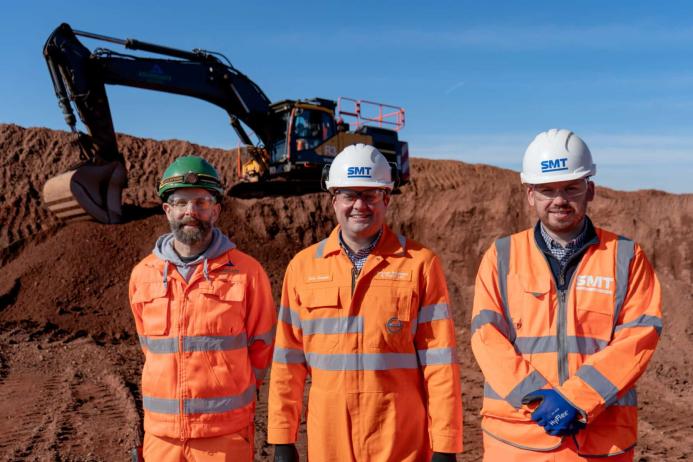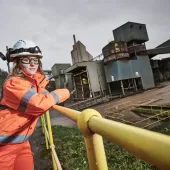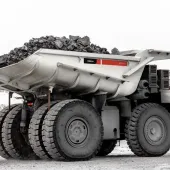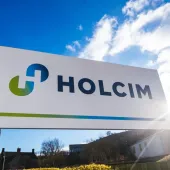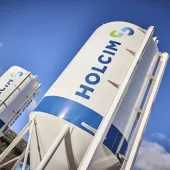Collaborative study redefines ground-engaging tools
3D scanning trial highlights economic and environmental benefits of Volvo Tooth System 2
A PIONEERING 3D scanning trial has revealed significant operational savings, longer component life, and substantial environmental benefits delivered by Volvo Construction Equipment’s Tooth System 2 (VTS 2) and solidifies a new industry benchmark.
A collaborative study between SMT Great Britain (SMT GB), exclusive Volvo Construction Equipment (Volvo CE) dealers, and Holcim (previously Aggregate Industries), has used advanced 3D laser scanning technology provided by Printing Portal to precisely measure wear rates, fuel efficiency, and productivity of ground-engaging tools (GET) in a live quarry environment.
The subject in question was Volvo’s second-generation tooth system (VTS 2) for excavators and wheel loaders. The test revealed that upgrading to VTS 2 can save an excavator operator approximately £9,500 annually in fuel alone, while significantly extending component life and cutting CO2 emissions.
‘This trial was about redefining how we assess the real-world performance of essential machine components. But by leveraging high-precision 3D scanning, we gathered indisputable data showing the tangible financial, operational, and environmental benefits of VTS 2,’ said SMT aftermarket business analyst James Smith.
Volvo CE’s initial tooth system was designed to boost breakout force, machine uptime, and efficiency. VTS 2 builds on this foundation with a stronger, safer design, including a streamlined, hammerless locking mechanism that eliminates the safety risks of traditional pin-and-hammer installations.
To put the VTS 2 in the spotlight, SMT, exclusive dealers for Volvo CE in Great Britain, partnered with Printing Portal, specialists in advanced scanning technologies. Together, they conducted a rigorous trial at Holcim’s Hillhead Quarry, in Devon, using a Volvo EC480E excavator.

The machine was first fitted with VTS 2 teeth, then swapped to a leading competitor’s product, operating under identical site conditions. Over several months beginning in June 2024, each tooth set completed more than 240 operational hours. High-resolution FARO laser scanners captured millimetre-accurate scans at weekly intervals, allowing precise analysis of tooth wear, material loss, and even subtle operator technique variations. Holcim’s excavator had previously run the original VTS 1 system, allowing SMT to benchmark against both the older Volvo product and the competitor’s offering.
‘This scanning process allowed us to track every tiny change in geometry over time,’ said Mr Smith. ‘Traditional inspections using tape measures or visual checks can’t detect this level of detail, often leading to premature component changes or unexpected failures.’
The data revealed clear, measurable advantages of Volvo’s VTS 2 system. Fuel consumption dropped by 4% per week, contributing to a 15% reduction in CO2 emissions. Operators also reported smoother material penetration, reducing the need for high-power modes and further improving fuel economy.
Crucially, the VTS 2 teeth were estimated to last between 700h and 750h – significantly outlasting the competitor’s estimate of a 450–500h range. These durability gains, combined with improved fuel efficiency, deliver a potential cost-per-hour saving of 10.5%. For typical operations, that translates to approximately £9,500 in fuel savings per machine, per year.
‘These aren’t just incremental improvements,’ said SMT GB site solutions business manager Sam Duggan. ‘This is a game-changer as to how we think about GET performance and cost-efficiency, and how we can measure it.’
Ease of maintenance was another standout feature. Thanks to its hammerless locking system, the VTS 2 allowed technicians to swap teeth in just 30mins – a dramatic improvement over the one-hour two-man process required by older systems.
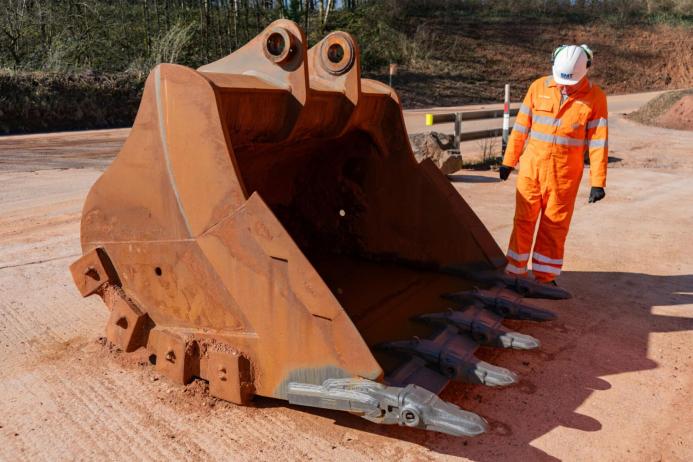
For Holcim, the results were so revelatory that they converted to VTS 2 before the trial concluded.
‘We were so impressed by the VTS 2 teeth that we took the opportunity to convert our own bucket to these teeth before we had even completed the tests. Once we saw how quickly and safely we could swap out teeth, combined with the data showing longer life and lower fuel use, it became the obvious choice,’ said Anthony Allday, Hillhead Quarry manager.
Beyond proving the capabilities of VTS 2, the study has unlocked new possibilities for 3D scanning within the construction and quarrying sectors. SMT Great Britain are now exploring further applications for this technology, including undercarriage and other wear component monitoring. Discussions are under way to offer scanning as part of SMT’s consultancy services, helping customers maximize component life and plan maintenance with unprecedented precision.
‘The ability to predict wear with this level of precision has huge implications for maintenance planning, procurement, and even product design,’ added James Smith. ‘We’ve already provided feedback to Volvo on potential future enhancements, including advanced coatings to extend tooth life even further.’
With proven savings, enhanced safety, and a lower carbon footprint, VTS 2 is setting the new benchmark in ground-engaging tools. But equally important is the analytical collaboration between Volvo CE, SMT, and Holcim, which is ushering in a new era in terms of how the industry can drive smarter, more economical decision-making across heavy machinery operations.

